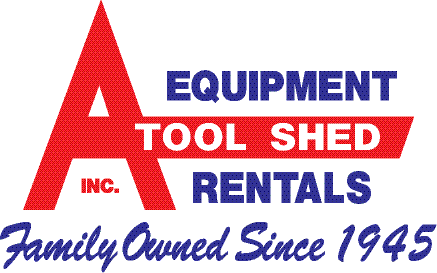-
How to Use Sandpaper Properly
Sandpaper is used to prep surfaces for painting and staining. If you’ve never used sandpaper before, this important tool can be a little trickier than it may seem. This video will show you techniques that will help.
Don’t try to use sandpaper sheets flat on surfaces with just your hand. Instead, wrap the sandpaper around a block of wood or other handheld implement and staple it in place. This will help you get the traction you need to sand effectively. Be sure to choose coarse sandpaper for smoothing wood and fine sandpaper for painted surfaces.
Whatever project you need to complete, A Tool Shed has all of the tools and rental equipment you need to get the job done. To learn more about tools for rent in San Jose, please call (800) 286-6574.
-
How to Use a Metal Detector
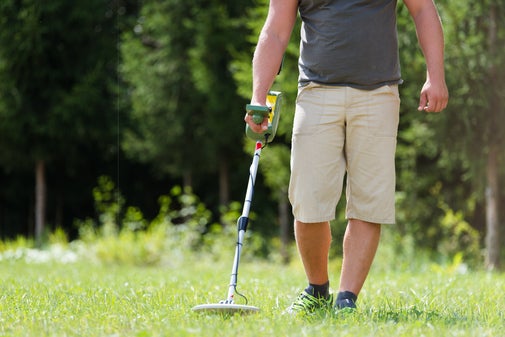
Metal detectors can be used on building sites to find underground pipes, and they are also popular with people who enjoy treasure hunting. If you have a need to use a metal detector as part of a work project or you simply want to try one out for treasure hunting hobby, you can rent this tool easily and affordably. Is using a metal detector new to you? These tips will help you get the most out of your equipment rental.
Practice Your Sweeping Technique
Getting your sweep right is critical to using your metal detector effectively. The detector itself needs to be close enough to the ground to actually detect buried metal, but it can’t be so close that it touches the surface. Many people have a tendency to sweep back and forth hurriedly, in short swings. However, this technique won’t give the detector enough to time to thoroughly penetrate and scan the surface. Instead, sweep slowly, in long back and forth swings, to methodically cover the area.
Test Your Detector
It can helpful to test your metal detector before you start using it. Bury a few coins and nails, and then see if you can find them again with the detector. Doing this will help you get used to the sounds the detector makes when it finds something and will give you a feel to how strong the detector’s sensors are. Be sure to use a few different kinds of metal, so you can see if the detector is better at finding some kinds than others.
Be Methodic with Your Search
When you search an area with your metal detector, take a methodic approach. Work slowly and deliberately, finishing your search of one point before moving on the to next. Using this kind of approach will help to ensure that you thoroughly search the area and don’t leave any parts uncovered.
If you need a metal detector for work or hobby use, contact A Tool Shed. We offer flexible and affordable equipment rentals in San Jose, including easy-to-use metal detectors. For more information, call (800) 286-6574.
-
What’s a Scissor Lift and Why Would I Need One?
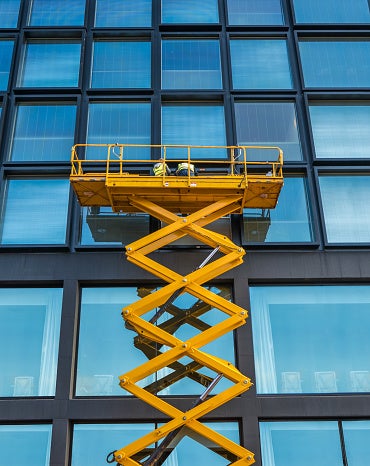
Scissor lifts, or aerial work platforms, are essential for safely working on projects at different heights. They have a crisscrossed mechanical lifting mechanism that allows workers to be elevated simply and safely. Thanks to the availability of scissor lifts as rental equipment, you don’t have to worry about purchasing one for short- or long-term jobs.
You can make use of a scissor lift at any job site at which you need an elevated platform. They are ideal replacements for ladders and scaffolding, particularly for jobs where your elevated platform needs to be used in multiple locations. With a scissor lift, you don’t have to break down and rebuild the entire platform every time you have to move it. It’s the perfect tool for window washing, tree trimming, construction, and even in factories or warehouses where you need to move items on high shelves.
A Tool Shed offers a variety of aerial work platforms as part of our selection of rental equipment in San Jose. To find out more about renting equipment, call (800) 286-6574.
-
Understanding R-Value
If your energy bills just keep climbing, you may want to take a look at your insulation. R-value is the measure by which the effectiveness of your insulation is determined. If your home’s R-value is insufficient, you can rent tools to improve it.
Watch this video to learn about insulation and R-values. R-value refers to how much resistance your insulation has to heat loss. The higher the R-value, the less heat loss you will experience. The specific R-value that is right for your home will depend on the climate in which you live.
A Tool Shed offers a range of equipment rentals to help with insulation installation and all of the other jobs you want to do around your home. For more information about renting tools in San Jose, call (800) 286-6574.
-
Welding Basics for Beginners
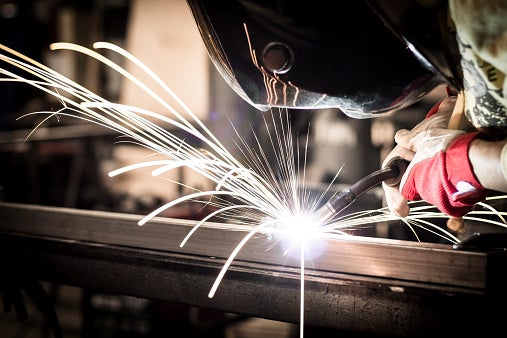
Welding takes practice, so beginners can often benefit from tips to make the job easier to complete. The more frequently you practice welding, the more comfortable you will become with all parts of the process. If you’re a beginning welder in search of some ways to make better use of your tool rentals, these basic guidelines will help.
Always Wear Safety Gear
Wearing safety gear is crucial for all welders, and it is even more important when you are inexperienced and more prone to experiencing accidents. Leather gloves and a welding helmet with eye protection are essential for preventing burns and damage to your eyes from the welding flame. You should also wear long sleeves to weld, as you can get sunburned from the flame as well. Beginning welders sometimes feel like the safety equipment seems excessive, but there is a reason you never see experienced welders skimping on safety gear. All of it is necessary for protecting yourself from serious injury.
Properly Prepare the Surface
Before you begin welding, the surface on which you will be working should be thoroughly cleaned with a wire brush and metal cleanser. You should also sand it, if necessary. Once the surface has been cleaned, apply a welding primer. The primer will prevent the surrounding areas from becoming rusted or corroded as a result of the welding.
Work with the Right Kind of Wire
Using the wrong welding wire can lead to weak welds or holes in the metal surface. If the metal on which you are working is thin, you should use a thin wire to avoid damaging the surface. For thick metal, use a thick wire that is strong enough for the job. Choose a wire that is made from the same kind of metal as the surface on which you are working.
Get all of the equipment you need for a safe and effective welding job at A Tool Shed. We offer a wide selection of equipment rentals in San Jose for both large and small jobs. To learn more information or to reserve your rental, call (800) 286-6574.
-
How to Remove an Interior Wall
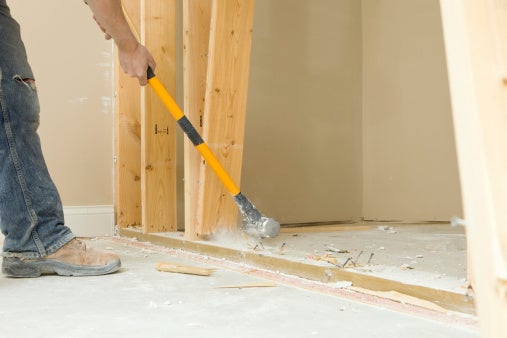
The process of removing an interior wall isn’t as complicated as you may think, as long as it is not load bearing. With the right tools and preparation, you can remove the wall in just a few steps. Be sure to gather the tools you will need before you begin, including any equipment rentals, so you don’t get stuck in the middle of the job. Follow these steps to fully remove an interior wall in your home.
Prepare the Wall
The first step is to prepare the wall for work. Start by shutting off the circuit breakers and removing all of the electrical plates and outlets. Shut off the water main if there are pipes in the wall. You will also need to remove any doors, trim, and baseboards that are on the wall. A flat bar is handy for removing the trim and baseboards. The last step in prepping the wall is to cut the paint and caulk between the wall and the ceiling. You should also make cuts between the wall and any adjacent walls you will not be removing. These cuts will prevent you from inadvertently removing drywall from the walls and ceiling you are leaving in place.
Cut into the Drywall
To start working on your drywall, first you have to punch holes in it using a framing hammer. Swing the hammer gently—it should easily break through the surface. If it doesn’t, then you are likely hitting a stud and need to move to a different portion of the wall. Next, use a reciprocating saw to cut the drywall. Remove it in sections until the drywall on both sides of the wall is completely gone.
Remove the Studs
The studs and beams should be clearly exposed now. Cut through each stud, and then slowly remove each one. Repeat the process until you have removed all of the studs and any leftover debris.
From framer hammers to reciprocating saws, A Tool Shed has all of the equipment rentals you need for every home improvement project. Call us today at (800) 286-6574 to rent tools in San Jose.
-
Spotlight on the Remote Control Trench Roller
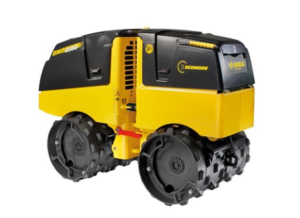
For compaction that is safer and more precise, consider adding a remote control trench roller to your list of equipment rentals. Remote control trench rollers have integrated safety features and the ability to deliver the maximum compaction results without loss of single in trench shoring. For large jobs, more than one trench roller can be used on the same site without the risk of interference. If you’re considering renting this equipment for your job, here is what you need to know.
Safe Remote Control Operation
Using a trench roller remotely increases operator safety, but concerns sometimes exist about the safety of allowing a powerful tool like this to move without manual operation. Fortunately, remote control trenchers require line-of-site control, so if the control box is out of the line of site of the equipment, it will no longer work. This means that it will be under observation at all times. Likewise, if the person who is controlling the trench roller comes within three feet of receiving eyes with the box, it will stop automatically, reducing the risk of collisions. The trench roller also monitors machine functions and provides alerts if there are any flaws, such as low oil levels or high engine temperatures, for safer and more efficient operation.
Superior Soil Compaction
Thanks to a low center of gravity and the ability to use both high and low compaction force, the compaction results are superior to manual trench rollers. Some trench rollers also have integrated compaction control systems that carefully monitor the level of compaction and provide an alert when the maximum level has been reached. The drums can be set to work at different widths based on the need of the job.
When you rent a remote control trench roller from A Tool Shed, you will need a midsized SUV, truck, or van if you have single access equipment trailer or at least a half-ton, full-sized vehicle for a dual axel trailer for safe towing. To find out more about renting equipment in San Jose from one of our seven locations, call (800) 286-6574.
-
See the Barreto Log Splitter in Action
A log splitter can be an invaluable tool for splitting firewood and breaking down lumber. It is a popular equipment rental item when winter is approaching and homeowners want to build up their supply of firewood for cool evening.
Watch this video to see the Barreto log splitter in action. It makes fast work of breaking down logs, making it easier than ever to have firewood or to split logs for other projects.
For Barreto sales and rentals in San Jose, choose A Tool Shed. We have seven locations across the area with a wide selection of equipment and tool rentals for all of your needs, as well as new and used equipment for sale. You can learn more by calling (800) 286-6574.
-
The Complete Guide to Polishing Your Car

If you want to keep your car looking as shiny as it did the day you drove it off the lot, then you have to polish it. Although car detailing companies do polishing as part of their services, you can do the same thing at home for much less by borrowing a polisher from an equipment rental company. Polishing your car once a year will keep it looking its best without compromising your paint job. Here is what you need to know to get the job done.
Wash and Rinse Your Car
Your car needs to be clean so that you can polish it. Choose a shaded area, and wash your car thoroughly. Rinse all of the soap off, but don’t dry it. It is best to wash your car by hand rather than running it through an automatic washer, which may not be as thorough and has a dry cycle.
Polish Panel by Panel
Before you start using the polisher, cover up any items nearby to protect them from spray from the tool. Be sure you are wearing clothing that can get dirty. Slightly dampen a polishing pod and apply it to the polisher. Put a polishing compound on one panel of your car—use enough of the compound to ensure that a moderate coating is in place. Turn the polisher onto medium speed and work on the panel, moving back and forth and being careful to avoid swirling or excessive pressure. Rinse the pad periodically to remove excess compound. Repeat the process on each panel of the car.
Wash and Wax
After you’re done polishing the car, wash it again, and this time, dry it completely. Wax the car using a foam wax pad, working the wax into the surface until there is only a haze left. Clean excess wax and polish from the windows using a microfiber cloth.
A Tool Shed offers car polishers among our large selection of equipment to rent in San Jose. To get your car looking as good as new, contact us today by calling (800) 286-6574 to reserve your tools at one of our seven area locations.
-
Are Popcorn Ceilings Outdated?
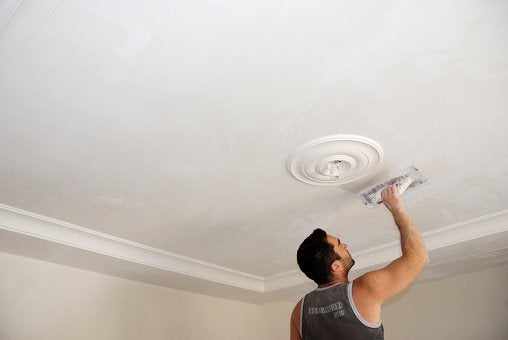
Popcorn ceilings—ceilings with bumpy textures—were once a popular home décor choice, but now that styles have changed, many homeowners are still left with this look overhead. Some people question whether popcorn ceilings are outdated—and some even wonder if they could be dangerous. Should you start looking into tools to smooth out your popcorn ceiling?
Some popcorn ceilings contain asbestos, which can be very dangerous when disturbed if not handled carefully. However, even if your ceilings don’t contain asbestos, popcorn ceilings are definitely past their prime in terms of style. If you plan to sell your home, renting equipment to get rid of your popcorn ceiling could be a smart investment.
A Tool Shed has a wide range of tool rental available, from drills to forklifts and everything in between. Start crossing items off your to-do list with out tool rentals in San Jose . To find out which of our seven locations is most convenient for you, call (800) 286-6574.
